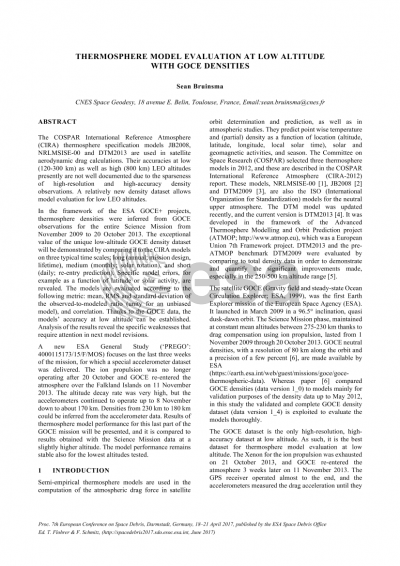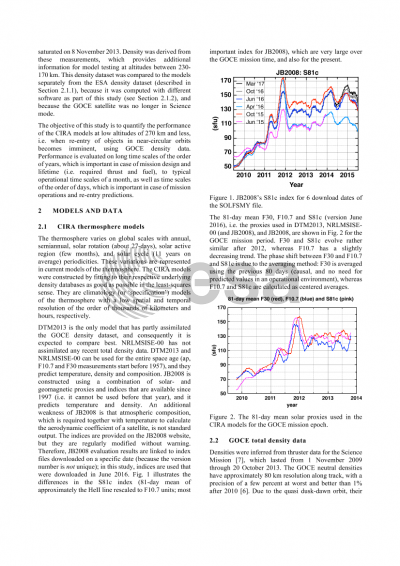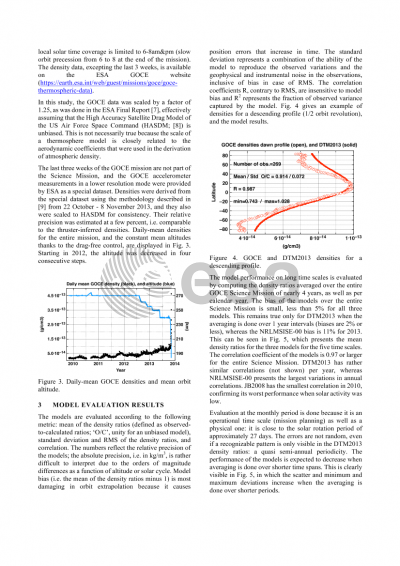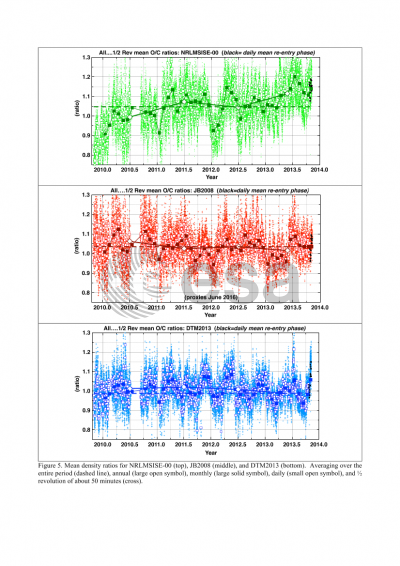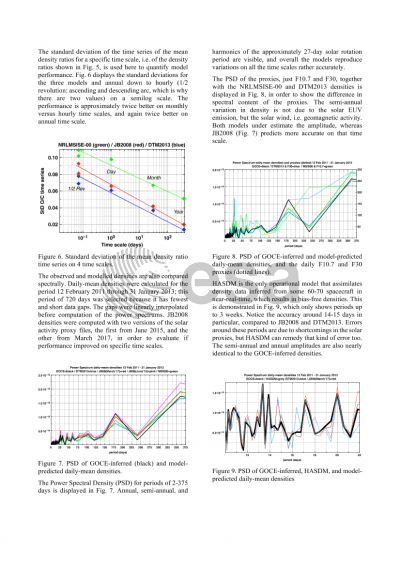Document details

Abstract
The COSPAR International Reference Atmosphere (CIRA) thermosphere specification models JB2008, NRLMSISE-00 and DTM2013 are used in satellite aerodynamic drag calculations. Their accuracies at low (120-300 km) as well as high (800 km) LEO altitudes presently are not well documented due to the sparseness of high-resolution and high-accuracy density observations. A relatively new density dataset allows model evaluation for low LEO altitudes.
In the framework of the ESA GOCE+ projects, thermosphere densities were inferred from GOCE observations for the entire Science Mission from November 2009 to 20 October 2013. The exceptional value of the unique low-altitude GOCE density dataset will be demonstrated by comparing it to the CIRA models on three typical time scales: long (annual; mission design, lifetime), medium (monthly; solar rotation), and short (daily; re-entry prediction). Specific model errors, for example as a function of latitude or solar activity, are revealed. The models are evaluated according to the following metric: mean, RMS and standard deviation of the observed-to-modeled ratio (unity for an unbiased model), and correlation. Thanks to the GOCE data, the models’ accuracy at low altitude can be established. Analysis of the results reveal the specific weaknesses that require attention in next model revisions.
A new ESA General Study (‘PREGO’: 4000115173/15/F/MOS) focuses on the last three weeks of the mission, for which a special accelerometer dataset was delivered. The ion propulsion was no longer operating after 20 October and GOCE re-entered the atmosphere over the Falkland Islands on 11 November 2013. The altitude decay rate was very high, but the accelerometers continued to operate up to 8 November down to about 170 km. Densities from 230 km to 180 km could be inferred from the accelerometer data. Results of thermosphere model performance for this last part of the GOCE mission will also be presented, and the performance will be compared to results of the Science Mission data at a slightly higher altitude.
Preview
